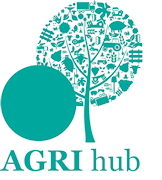Farmers have a growing range of tools to improve crop management, from precision
sprayers and sensor technology to AI-powered forecasts. But can these tools help reduce
reliance on pesticides, while maintaining productivity and crop health? AHDB hosted a
seminar at the Cereals Event to find out.
“Decision support systems are software tools that help individuals and organisations make
better decisions and improve management practices,” explained crop protection scientist
Siobhan Hillman. “One example is our Barley Yellow Dwarf Virus T-sum management tool,
which helps farmers assess risk based on local conditions. Because aphid migration is
temperature-dependent, the tool can indicate when and where the risk is highest – allowing
growers to target interventions more effectively.”
Another digital development is the mycotoxin rainfall risk tool, which runs from June to mid-
harvest, a critical period for cereal growers. “Rainfall is a key factor influencing mycotoxin
levels in grain,” said Ms Hillman. “This tool uses local weather data to give farmers a real-
time risk score based on their location, helping them make informed decisions around
harvest timing and grain testing.”
Building on the theme of targeted disease management, AHDB also showcased its phoma
leaf spot forecast, designed to support autumn spray decisions in oilseed rape (OSR). “Early
detection of phoma in OSR is key,” explained Ms Hillman. “This tool uses local temperature
and rainfall data to model the risk of infection, giving growers region-specific insights
throughout the season.”
By allowing users to filter by region and compare disease risk between years, the forecast
helps farmers spot trends and act accordingly, spraying only when needed – thereby
avoiding unnecessary costs.
Also highlighted was the sclerotinia infection risk alert tool for OSR, which monitors
conditions across 100 different sites. “This tool tracks temperature, humidity, and infection
risk over the past 24 hours and predicts the next 72 hours,” explained Ms Hillman. “Once
relative humidity reaches 80% or higher, combined with temperatures above 7°C, the tool
activates risk alerts. This helps growers know when protective measures should be taken.”
Field Bee GPS
As agricultural technology advances, it’s becoming increasingly rare to find large farms not
making use of automation such as GPS guidance systems. Now, a new European innovation –
developed in Poland and showcased at the Cereals Event – is bringing that same cutting-
edge capability to small and mid-sized farms, offering a locally developed alternative to
global competitors.
“Our app alone has already had over one million downloads, showing that there’s a strong
interest even before customers purchase the hardware,” said Johanna Ramoser at FieldBee.
“It’s more realistic than other GPS systems on the market, making it much easier for farmers
of all generations to use.”
FieldBee’s most affordable system, PowerSteer, is priced at just £1,520 and is eligible for
support through the Farming Equipment and Technology Fund (FETF). Its versatility allows it
to be used across a wide range of machinery, including tractors, combines, and more.
Telecoms Infrastructure Partners
Farmers who are seeking to generate a capital lump sum to invest in new technology could
benefit from a new offering from Telecoms IP. Since a change in telecoms legislation in
2017, rents from telecoms masts have slumped and become more difficult to negotiate, said
the firm’s Steve Froggatt. Rather than face an uncertain future, farmers can instead take a
lump sum payment that’s guaranteed, even if the site is decommissioned in the years to
come.
“We offer leases from 25 to 99 years, or a freehold option,” said Mr Froggatt. The value of
the sites can vary depending on individual circumstances; however, farmers can expect a
lump sum of tens of thousands of pounds. “A lot of people coming to the end of their
existing agreements are being offered poor terms and the threat of Tribunal,” he explained.
“If you get a letter from your telecoms operator, don’t ignore it. We can offer a proposal
within a week and provide a lump sum for reinvestment into your business.”




